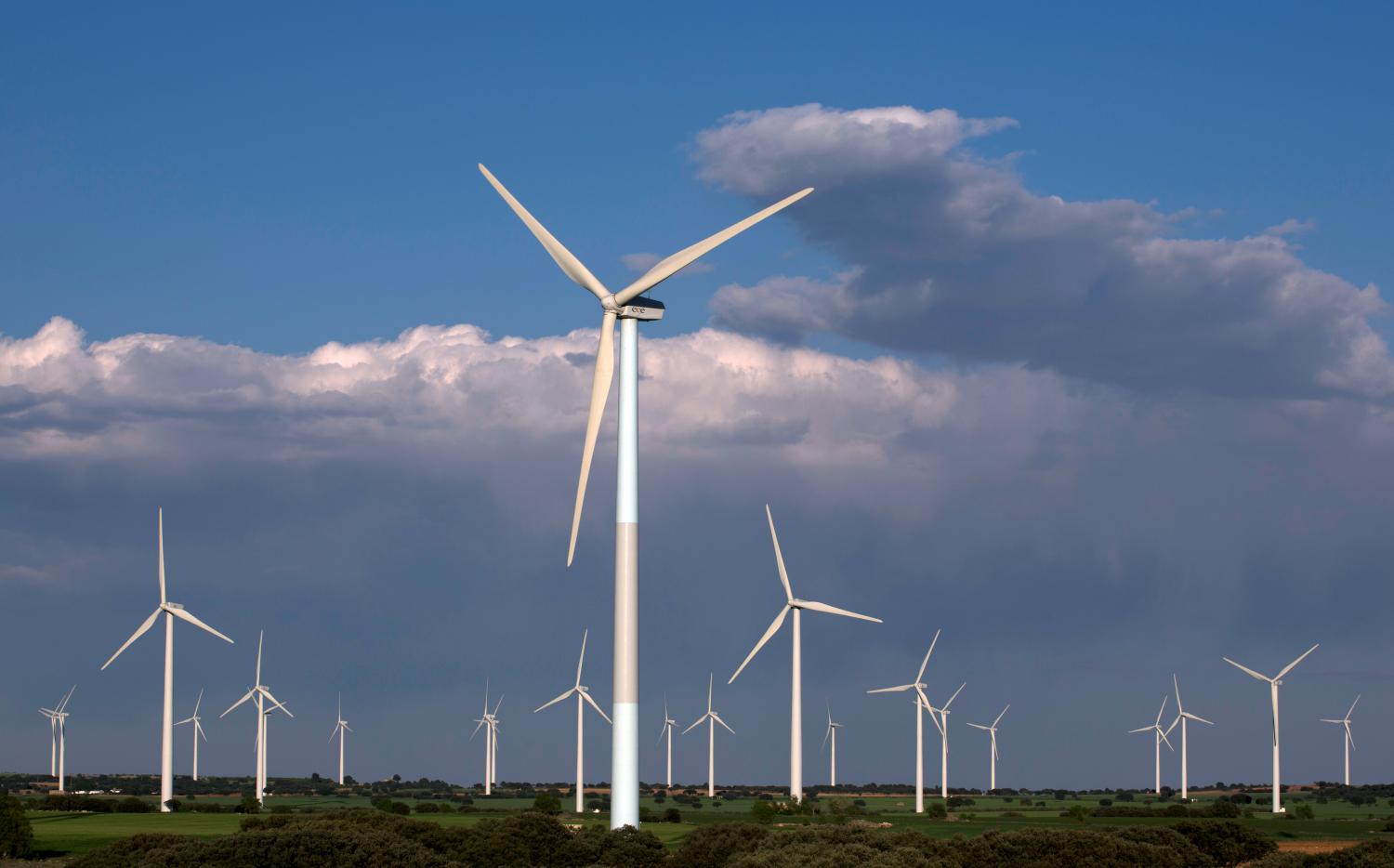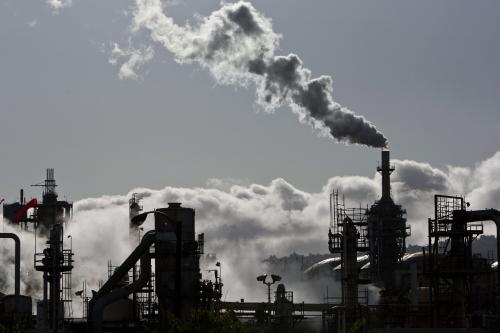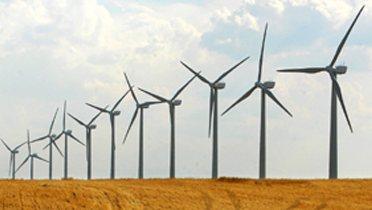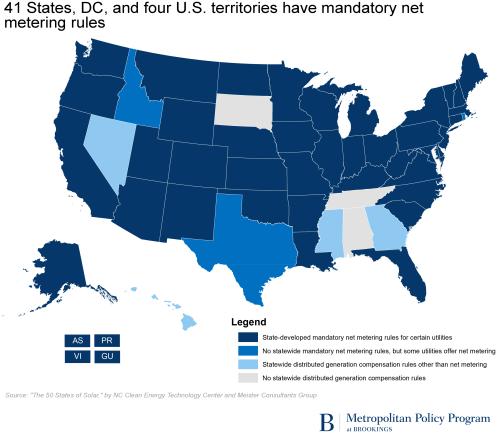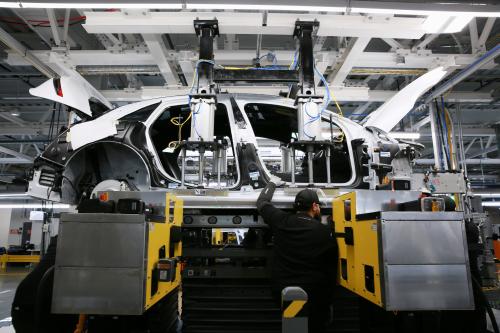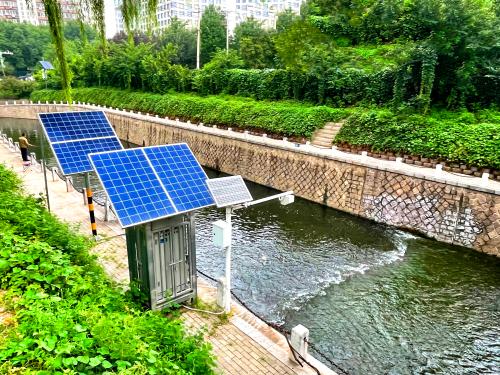Energy innovation matters hugely to America’s future. The reason: Energy innovation represents a gargantuan $1.4 trillion global business opportunity, with more up-side on the way.
The bottom line: Low-carbon technology holds great potential to spark high-quality growth in U.S. regions, support the manufacturing sector, and improve the trade balance.
 And yet, there is a problem. At just the moment when the U.S. clean energy innovation enterprise may be hitting a flat spot, the Trump administration has proposed draconian federal budget cuts that raise new concerns about the future of the nation’s commitment to low-carbon economic development.
And yet, there is a problem. At just the moment when the U.S. clean energy innovation enterprise may be hitting a flat spot, the Trump administration has proposed draconian federal budget cuts that raise new concerns about the future of the nation’s commitment to low-carbon economic development.
Which is why—as Congress turns to shaping the 2018 budget—it is worth assessing the status of the U.S. cleantech innovation enterprise, both nationally and regionally, as it is unfolding across 14 technology areas and the nation’s diverse metropolitan areas.
To that end, this first brief of two on cleantech innovation—a forthcoming analysis will examine venture capital (VC) dynamics—looks at technology patenting activity as a key indicator for monitoring the development of new technologies, as represented by the volume and topics of new patents resulting from public and private funded research.
What do these data show? Overall, the data show that even as cleantech patenting has grown over the years, serious concerns remain about the competitiveness of the U.S. cleantech innovation scene. At the same time, while much of America’s patenting takes place in relatively few large metropolitan areas, significant cleantech innovation activity extends into all regions of the country. That breadth underscores both the relevance and potential of low carbon innovation.
Taken together, the findings of this brief provide a mixed picture of U.S. cleantech innovation that runs as follows:
- U.S. cleantech patenting has grown significantly since 2001, outpacing growth in all U.S. patents, but may now be flagging. Since 2001, the total number of granted patents in the cleantech sector has more than doubled—from a little less than 15,000 cleantech patents granted in 2001 to approximately 32,000 in 2016. With that said, the number of cleantech patents granted in the country has declined by 9 percent between 2014 and 2016.

- Cleantech patenting is concentrated in relatively few technology categories. Overall, a total of 186,500 patents have been granted in the United States since 2011 across 14 cleantech categories. Of this activity, advanced green materials, energy efficiency, and transportation each accounted for fully 18 percent of the total patenting, while energy storage accounted for another 15 percent. In contrast, drastically fewer patents are being granted in other cleantech areas such as geothermal energy, hydro & marine power, and nuclear generation.
- U.S. cleantech patenting is both concentrated in large metropolitan areas and widely distributed across diverse regions of the country. Cleantech patenting, in terms of absolute patent issuance, is highly concentrated in a relatively small number of larger metropolitan areas. 10 metro areas ranging from Boston and Detroit to Houston, Minneapolis, San Francisco, and San Jose accounted for 38 percent of the cleantech patents developed by U.S. inventors since 2011, while 20 metro areas accounted for 52 percent. And yet, the patent data make clear that cleantech innovation is also widely distributed across diverse regions of the country—in red and blue states, and in big and small metros such as Ann Arbor, Boise City, Columbus, IN, Greenville, and Knoxville.
Brookings analysis of IP Checkups’ Cleantech PatentEdge database
- The nation’s metro areas, both big and small, display distinctive profiles in cleantech patenting. The nation’s most inventive low-carbon energy patenting metros vary in their specializations, meaning that varied regions with distinctive industry clusters are functioning as globally significant innovation hubs that convene local business, academia, and government to drive American competitiveness. Whether it is large metros such as Detroit specializing in transportation patents and Houston in conventional fuels, or smaller metros such as Ames, IA in bioenergy and Wilmington, NC in nuclear, a large number of America’s metropolitan area stand out as regionally differentiated platforms for cleantech innovation.
- The share of U.S. cleantech patents owned by foreign companies has grown over the years, raising concerns about the global competitiveness of U.S. companies. In 2001, both U.S. and foreign-owned companies generated about 47 percent of cleantech patents each. By 2016, 51 percent of all cleantech patents were owned by large foreign multinationals, while only 39 percent were generated by U.S. companies. This trend reflects the globalization of cleantech industries, particularly in developed and developing Asian economies urgent about reducing carbon emissions and cornering growing markets for cleantech.
Given the size of the global clean energy economic opportunity, the United States can ill afford to relinquish its lead on innovation in the burgeoning global cleantech market to China or other countries. For that reason, Congress should set aside the skinny budget and draw on years of bipartisan support for energy innovation to coalesce around a core list of minimum viable supports for low-carbon innovation and growth. Most crucial will be provisions to maintain clean energy R&D appropriations at viable levels; maximize the impact of the nation’s 17 national energy laboratories; and preserve the Advanced Research Projects Agency (ARPA-E) while maintaining and scaling up the nation’s energy innovation hubs and institutes. For their part, states and regions can and must step up to invest more robustly on their own in low-carbon innovation, just as must the private sector, which must argue more forcefully for essential federal supports even as it moves to shoulder more of the burden itself.
In sum, Congress as well as the private sector and states and regions stand at a critical juncture this spring. With the economic potential of cleantech innovation widely acknowledged, the question has become: Will the U.S. compete?
The Brookings Institution is committed to quality, independence, and impact.
We are supported by a diverse array of funders. In line with our values and policies, each Brookings publication represents the sole views of its author(s).

